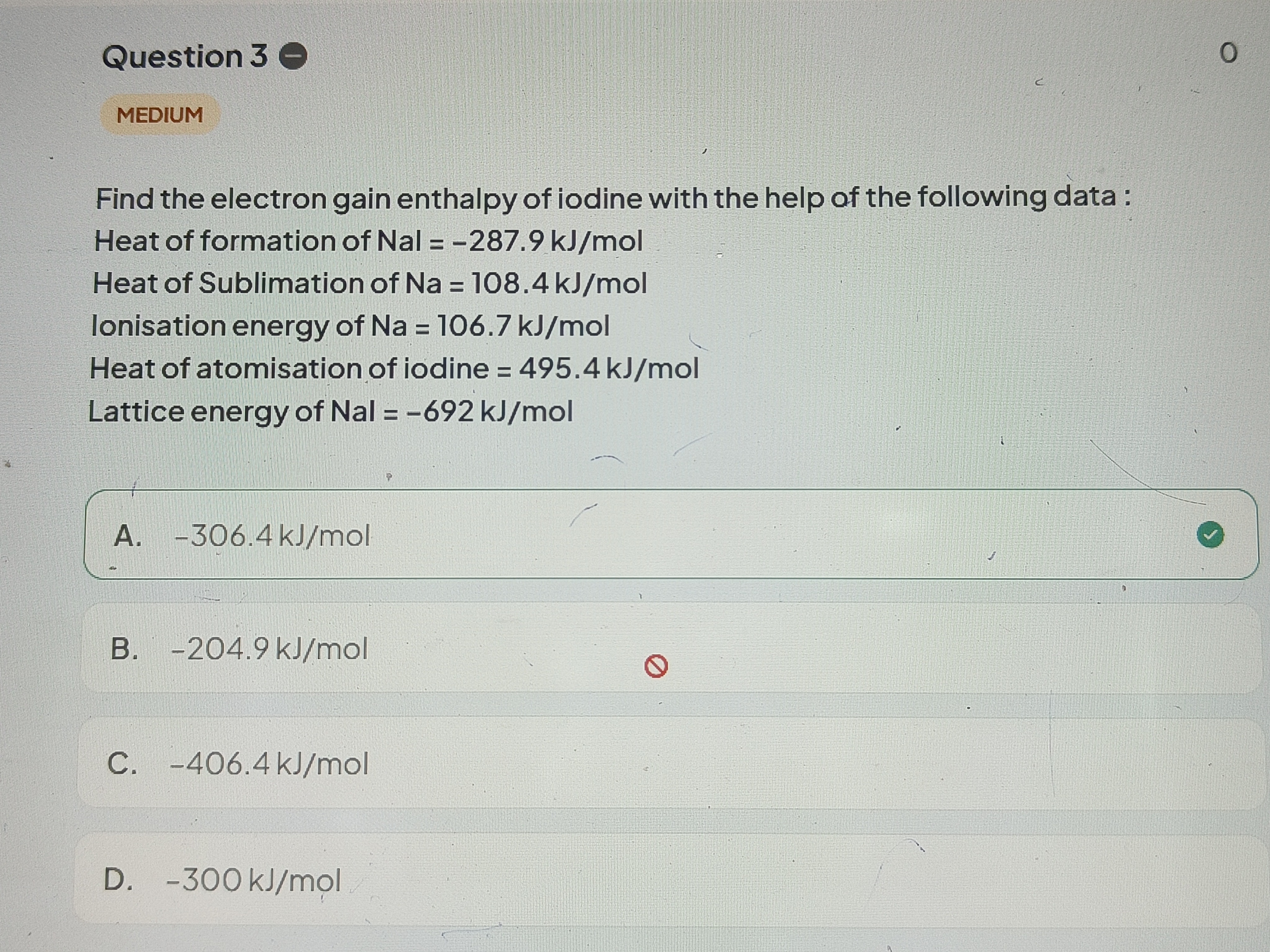Question
Question: Find the electron gain enthalpy of iodine with the help of the following data: Heat of formation of ...
Find the electron gain enthalpy of iodine with the help of the following data: Heat of formation of NaI = -287.9 kJ/mol Heat of Sublimation of Na = 108.4 kJ/mol Ionisation energy of Na = 106.7 kJ/mol Heat of atomisation of iodine = 495.4 kJ/mol Lattice energy of NaI = -692 kJ/mol

-306.4 kJ/mol
-204.9 kJ/mol
-406.4 kJ/mol
-300 kJ/mol
-306.4 kJ/mol
Solution
The Born-Haber cycle is used to determine the electron gain enthalpy. The cycle represents the formation of an ionic compound from its constituent elements through a series of steps. The enthalpy change for each step is known, and the overall enthalpy of formation is also known. By applying Hess's Law, the unknown enthalpy change (in this case, electron gain enthalpy) can be calculated.
The steps involved in the Born-Haber cycle for NaI are:
- Sublimation of Sodium: Na(s) → Na(g) ; ΔHsub = 108.4 kJ/mol
- Ionization of Sodium: Na(g) → Na⁺(g) + e⁻ ; IE = 106.7 kJ/mol
- Atomization of Iodine: 1/2 I₂(s) → I(g) ; ΔHatom_I = 495.4 kJ/mol
- Electron Gain by Iodine: I(g) + e⁻ → I⁻(g) ; ΔHeg (Electron Gain Enthalpy of Iodine) = ?
- Formation of Lattice: Na⁺(g) + I⁻(g) → NaI(s) ; ΔHlattice = -692 kJ/mol
The enthalpy of formation (ΔHf∘) of NaI is the sum of the enthalpies of these steps: ΔHf∘ = ΔHsub + IE + ΔHatom_I + ΔHeg + ΔHlattice
Given values: ΔHf∘ (NaI) = -287.9 kJ/mol ΔHsub (Na) = 108.4 kJ/mol IE (Na) = 106.7 kJ/mol ΔHatom_I (1/2 I₂(s) → I(g)) = 495.4 kJ/mol ΔHlattice (NaI) = -692 kJ/mol
Substitute the values into the equation: -287.9 kJ/mol = 108.4 kJ/mol + 106.7 kJ/mol + 495.4 kJ/mol + ΔHeg + (-692 kJ/mol)
Sum the known enthalpy values: 108.4 + 106.7 + 495.4 - 692 = 710.5 - 692 = 18.5 kJ/mol
The equation becomes: -287.9 kJ/mol = 18.5 kJ/mol + ΔHeg
Solve for ΔHeg: ΔHeg = -287.9 kJ/mol - 18.5 kJ/mol ΔHeg = -306.4 kJ/mol
